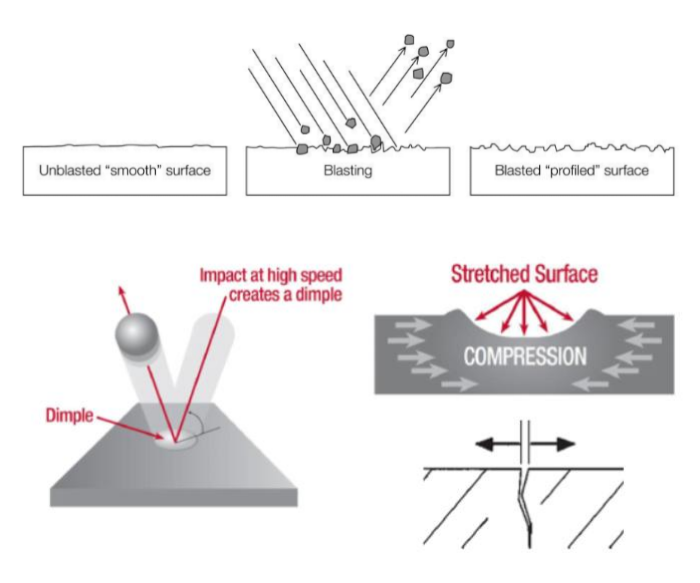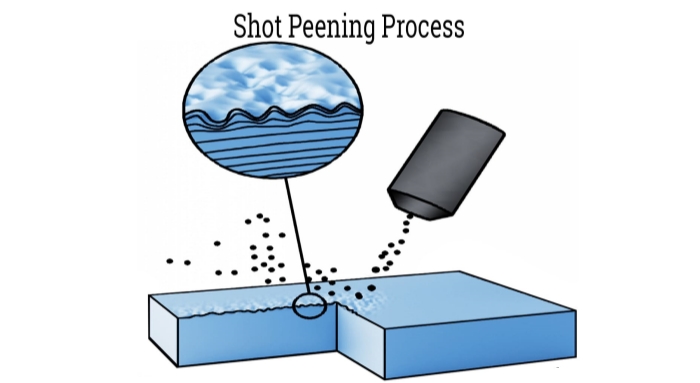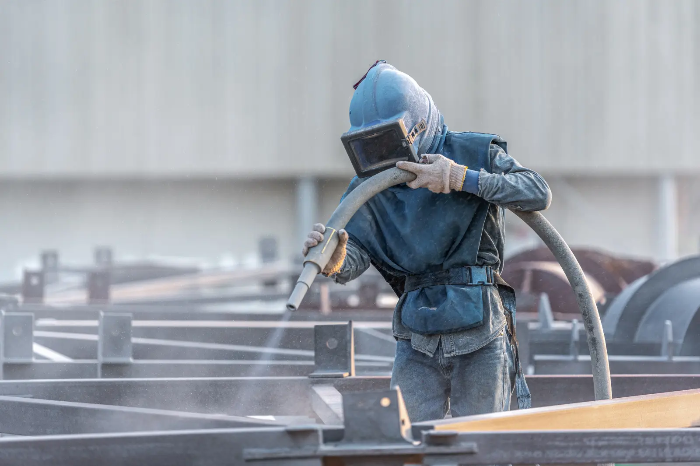
Metal finishing processes like shot peening and shot blasting are essential in industries where durability and precision are critical. While both involve projecting particles at a surface, they serve different purposes and achieve unique results. Understanding their distinctions can help businesses select the ideal method for their specific application.
Shot peening is used to enhance material strength and fatigue resistance, while shot blasting is primarily for cleaning and surface preparation.
To help you choose between these processes, let’s explore their applications, techniques, and benefits in detail. This guide will break down their key differences to simplify your decision-making process.
Selecting the right method can improve product quality, reduce costs, and ensure optimal performance in demanding applications.
Table of Contents
What Is Shot Peening and How Does It Work?
Shot peening is a cold working process that improves a material’s durability by inducing compressive stress on its surface. It is widely used in industries like aerospace, automotive, and energy.
Shot peening uses spherical particles to create small indentations on a material’s surface, enhancing its fatigue resistance.

During shot peening, small spherical media (usually steel, glass, or ceramic) are propelled at the material under controlled conditions. The repeated impacts create compressive stress, which counteracts tensile stress caused by manufacturing processes. This extends the life of the material by making it more resistant to fatigue and cracking.
Shot peening is the best choice for improving the mechanical strength of components in high-stress environments.
What Is Shot Blasting and How Does It Work?
Shot blasting employs a variety of abrasive materials such as steel grit, sand, or glass beads. The high-speed impact effectively cleans the surface, preparing it for painting, coating, or other finishing processes. Unlike shot peening, this process does not aim to alter the material’s mechanical properties.
For surface cleaning and preparation, shot blasting is the go-to method.

How Do Shot Peening and Shot Blasting Differ in Application?
Although similar in technique, shot peening and shot blasting differ significantly in their objectives and outcomes. Understanding these differences is essential for selecting the correct process.
Shot peening enhances mechanical properties, while shot blasting focuses on cleaning and preparation.

The key difference lies in purpose: shot peening modifies the material’s surface properties by creating compressive stress, whereas shot blasting prepares surfaces by removing unwanted coatings or debris. Industries like aerospace prioritize peening for fatigue resistance, while construction often relies on blasting for rust removal.
Choosing between the two processes depends entirely on your project’s specific needs—strength enhancement or surface preparation.
Which Method Should You Choose?
Selecting the right method involves considering factors like material type, project goals, and cost-effectiveness.
Shot peening is ideal for durability and strength, while shot blasting excels in surface cleaning and preparation.
Here’s a table summarizing the key differences between Shot Peening and Shot Blasting:
| Shot Peening | Shot Blasting | |
| Purpose | Improve material fatigue resistance and prevent cracking | Clean and prepare surfaces by removing rust, paint, and contaminants |
| Industries | Aerospace, automotive, energy, high-stress applications | Construction, manufacturing, shipbuilding, surface cleaning |
| Process Principle | Uses spherical media (e.g., steel or ceramic beads) to create compressive stress on the surface | Propels abrasive media (e.g., steel grit, sand) at high speeds to clean surfaces |
| Effect | Enhances mechanical strength, extends fatigue life | Cleans surfaces, prepares for further treatment (e.g., coating, welding) |
| Media Type | Steel shots, glass beads, ceramic beads, etc. | Steel grit, sand, glass grits, etc. |
| Primary Use | Strengthening components, reducing cracks and fatigue damage | Surface cleaning, removing corrosion, coating or paint removal |
| Suitable Materials | Metals (e.g., aerospace parts, engine components) | Metals, steel, concrete, and other surfaces requiring cleaning |
| Impact on Material | Alters the surface structure, improving tensile strength and fatigue resistance | No change to material properties, just surface cleaning |
| Cost | Higher (due to precision control and equipment requirements) | Lower (ideal for large-scale cleaning operations) |
If your priority is increasing the fatigue life of components, shot peening is the better option. However, for cleaning large metal surfaces or preparing them for further treatment, shot blasting is more effective. Consult with experts to assess your specific requirements before committing to a method.
An informed decision ensures optimal performance and cost efficiency for your projects.
Conclusion
Shot peening and shot blasting are indispensable processes in modern manufacturing and construction. While both utilize high-speed particle projection, their goals and outcomes differ greatly. Shot peening strengthens materials by introducing beneficial stresses, whereas shot blasting ensures clean and prepared surfaces. Choosing the right process can significantly impact the quality and longevity of your products.
